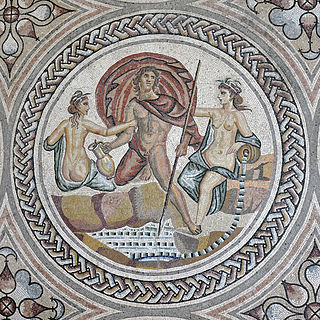The Water Nymph may refer to:
- Water nymph
- The Water Nymph (1912 film), an American silent comedy short film
- The Water Nymph (1910 film), a Russian short film
The Water Nymph may refer to:
Aba may refer to:
Calypso, Calipso or Kalypso may refer to:

A dragonfly is a flying insect belonging to the infraorder Anisoptera below the order Odonata. About 3,000 extant species of true dragonflies are known. Most are tropical, with fewer species in temperate regions. Loss of wetland habitat threatens dragonfly populations around the world. Adult dragonflies are characterized by a pair of large, multifaceted, compound eyes, two pairs of strong, transparent wings, sometimes with coloured patches, and an elongated body. Many dragonflies have brilliant iridescent or metallic colours produced by structural coloration, making them conspicuous in flight. An adult dragonfly's compound eyes have nearly 24,000 ommatidia each.

Damselflies are flying insects of the suborder Zygoptera in the order Odonata. They are similar to dragonflies but are smaller and have slimmer bodies. Most species fold the wings along the body when at rest, unlike dragonflies which hold the wings flat and away from the body. An ancient group, damselflies have existed since at least the Lower Permian beginning about 299 million years ago, and are found on every continent except Antarctica.

A dryad is a tree nymph or tree spirit in Greek mythology. Drys (δρῦς) signifies "oak" in Greek. Dryads were originally considered the nymphs of oak trees specifically, but the term has evolved towards tree nymphs in general, or human-tree hybrids in fantasy. Often their life force was connected to the tree in which they resided and they were usually found in sacred groves of the gods. They were considered to be very shy creatures except around the goddess Artemis, who was known to be a friend to most nymphs.

In classical mythology, Hylas was a youth who served Heracles as companion and servant. His abduction by water nymphs was a theme of ancient art, and has been an enduring subject for Western art in the classical tradition.
The name Egeria may refer to:

Mayflies are aquatic insects belonging to the order Ephemeroptera. This order is part of an ancient group of insects termed the Palaeoptera, which also contains dragonflies and damselflies. Over 3,000 species of mayfly are known worldwide, grouped into over 400 genera in 42 families.
Rusalka is a water-nymph in Slavic mythology.
Enchantress most commonly refers to:
Narf or NARF may refer to:
In Greek mythology, a nymph or nymphe is a female nature-spirit.

The Pheasant Tail nymph or PT Nymph or Sawyer's Pheasant Tail is a popular all purpose nymph imitation used by fly anglers. It imitates a large variety of olive, olive-brown colored aquatic insect larvae that many fish including trout and grayling feed upon.

The Water Nymph is a 1912 American silent comedy "split reel" short film starring Mabel Normand and directed by Mack Sennett. Normand performed her own diving stunts for the film, which was the first Keystone Studios comedy.
Wood nymph is another term for a dryad in Ancient Greek mythology.
Sea nymph may refer to:
The Constant Nymph may refer to:
Dione is the name of four women in ancient Greek mythology, and one in the Phoenician religion described by Sanchuniathon. Dione is translated as "Goddess", and given the same etymological derivation as the names Zeus, Diana, et al. Very little information exists about these nymphs or goddesses, although at least one is described as beautiful and is sometimes associated with water or the sea. Perhaps this same one was worshiped as a mother goddess who presided over the oracle at Dodona, Greece and was called the mother of Aphrodite.
Tilottama is an Apsara described in Hindu mythology.

The Mermaid is a 1904 French short silent film by Georges Méliès. It was sold by Méliès's Star Film Company and is numbered 593–595 in its catalogues.